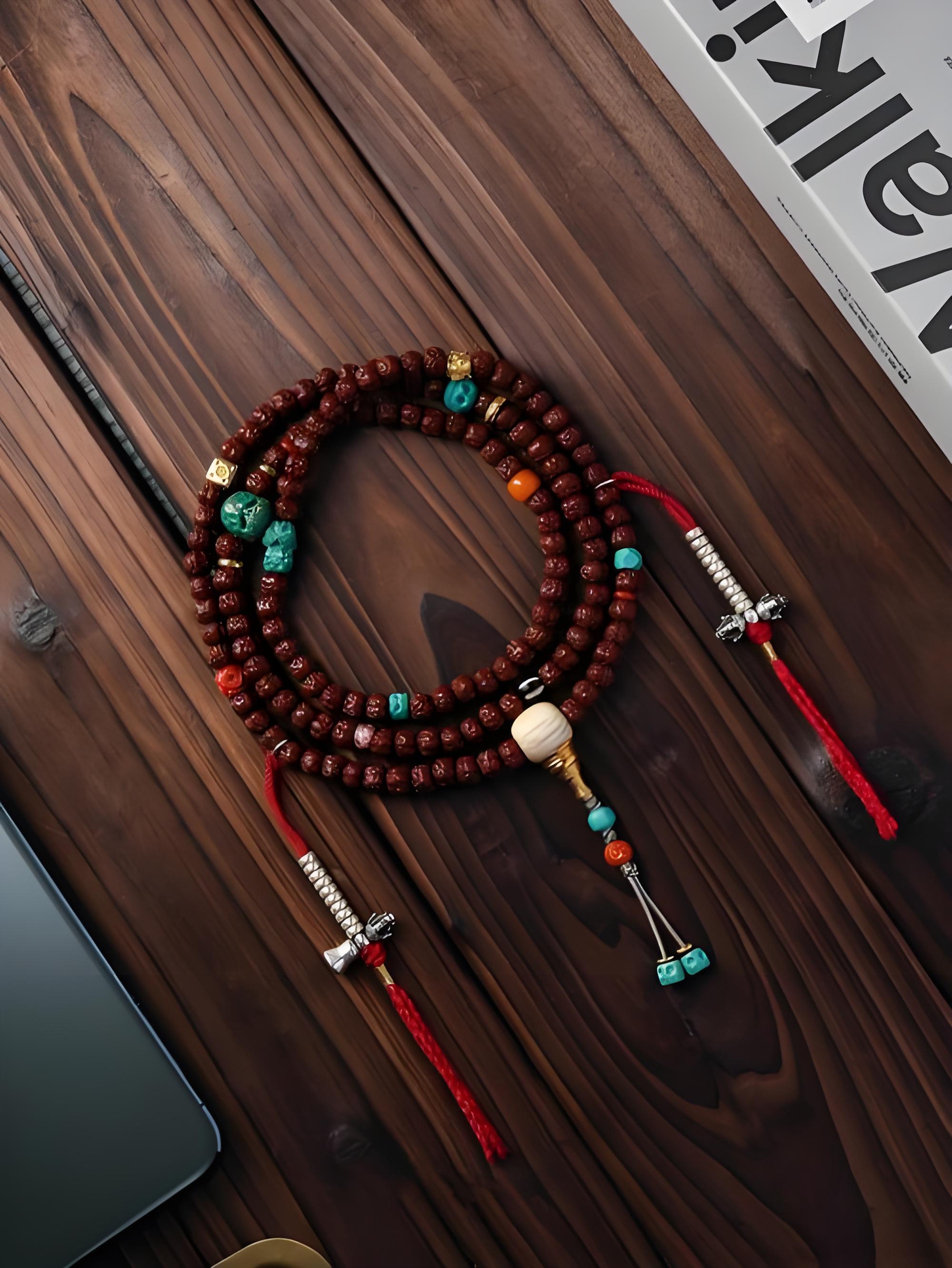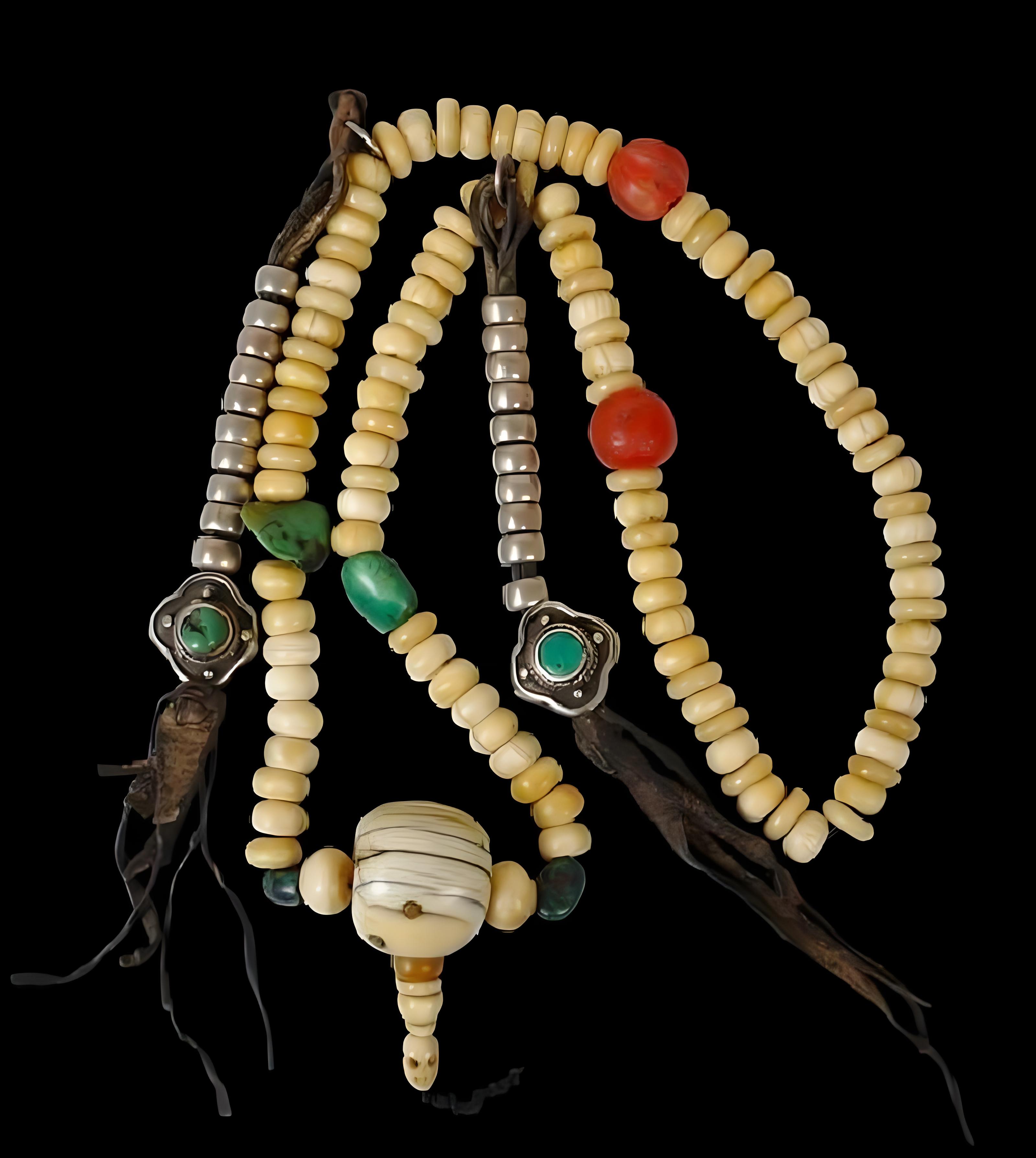Introduction to the Significance of Prayer Beads
Many of us may wonder why, despite reciting mantras hundreds of thousands of times, we don’t always experience the desired results. The primary reason is often that we haven’t followed the instructions of ancient masters. Therefore, the power of our mantras may not manifest effectively. Prayer beads, or malas, are particularly significant in Tibetan Buddhism. In tantric practices, since we recite mantras and visualize deities daily, prayer beads become an integral part of our lives. Using them incorrectly diminishes the efficacy of our practices. This article aims to explain the proper way to use prayer beads, a crucial topic for spiritual practitioners.
Why Understanding Proper Usage Matters
Prayer beads are essential tools, but because they are often easily obtained, we may take them for granted. Failing to use them correctly can greatly impact your spiritual practice. Some may habitually use their right hand to handle prayer beads, but according to tantric scriptures, they must be used with the left hand.
Choosing the Right Material for Your Prayer Beads
According to Padmasambhava, the material of your prayer beads matters. If possible, using precious materials such as diamonds, rubies, or gold is considered best. They can inspire joy and deepen devotion. However, if these are not accessible, using tree seeds like Bodhi seeds is a very suitable and valued option. If tree seeds aren’t available, wood or medicinal herbs shaped into beads can be used. Plastic, which is cheap and easily available, is not recommended, nor are beads made from human skulls or skull shapes, which should be avoided.
Padmasambhava emphasizes that Bodhi seeds are the best material for prayer beads.
When Not to Use Prayer Beads
It’s essential to know when prayer beads should not be used. Avoid using beads given to you by someone who has broken their samaya vows or their guru’s precepts, or that are stolen, taken by force, or have been offered to Buddha or Bodhisattvas. Do not use beads that are on deities as adornments or that are of uneven size. If a bead on a new mala is damaged, replace it immediately.
Proper Handling and Care of Your Prayer Beads
Avoid placing prayer beads on the ground. Specifically, they should not be stepped over by animals like cats or dogs. If prayer beads have been used to hit an animal, they are also unsuitable for use. Beads should be of uniform size and comfortable to handle when reciting mantras. Avoid using overly large beads (as used by Shaolin monks) or very small, tightly strung beads which make recitation difficult.
The string should not be too loose as this will create obstacles in practice. Likewise, it shouldn’t be too tight. The length should be appropriate; a mala hanging down to the knees is too long, while a very short mala is believed to reduce lifespan.
If a mala breaks, do not be superstitious. Simply have it restrung by a lama or restring it yourself.
Empowering Your Prayer Beads
When stringing beads, visualize a sun disc on your right palm with the seed syllable “Hum.” On your left palm, visualize a moon disc with the seed syllable “Ah.” As you string each bead, consider that your hands represent method and wisdom. Simultaneously recite “Hum! Hum! Hum!” The visualization is essential at this time, and you shouldn’t watch TV or sing while stringing them. The seed syllable “Hum” is powerful, purifying all defilements and destroying afflictions and the hook of samsara.
The Structure of Prayer Beads
The tassel of your mala should have three layers: blue, red, and white. These represent the body, speech, and mind of the deity. Although, currently, single color tassels are more common. The string represents the deity, while the beads represent their retinue. Therefore, prayer beads must not be placed on the floor or in pockets. Doing so is considered an act of blessing the deities.
Blessing Your Prayer Beads
Hold your mala in your right hand and support it with your left. Rotate it clockwise, bringing the tassel to the center. Visualize a moon disc with “Ah” on your left palm, and a sun disc with “Hum” on your right palm. Imagine that your mala is purified along with yourself and that all obstacles are cleared. The mala is now the deity. Visualize the deity on a lotus, atop a sun disc and moon disc. Envision the deity radiating white, red, and blue light, inviting the true deity to reside within the prayer beads. Consider the mala as the living embodiment of the deity, potent with power. It’s essential to realize that we are also the embodiment of the deity.
While blessing prayer beads, a prayer should be recited. The recitation can transform each recitation into the merit of 100,000 recitations. Recite the mantra seven times and then recite the second mantra while rubbing the beads and blowing on them. This blessing may be done once or twice a month. It can also be done whenever the prayer beads are soiled.
Proper Methods for Reciting with Prayer Beads
Use the left hand to hold and turn the mala. Never lie down or fall asleep during practice. According to Padmasambhava, for peaceful deities, hold the mala at the heart. For prosperity practices, hold it at the navel. For powerful deities, hold the mala at the secret place, and for wrathful deities, hold it at the knees.
Use the thumb and index finger for peaceful deities, the thumb and middle finger for prosperity deities, the thumb and ring finger for powerful deities, and the thumb and little finger for wrathful deities. Generally, the thumb and index finger are used for most practices. Move one bead for each mantra recitation. Avoid moving beads in large batches, which is viewed as disrespectful.
The Samaya Vows Regarding Prayer Beads
Padmasambhava’s teachings include main and secondary vows regarding prayer beads. The main vow is to keep your mala with you always. They can be worn around the neck or placed in a bag, but they should never be separated from you. Do not flaunt or compare your mala to others. In the past, masters would keep their malas hidden, which increased their power. If you carry your mala with you and take care of it, you’ll enhance the efficacy of your spiritual practice.
Use prayer beads only for reciting mantras, not for play. Malas should be single colored with uniform beads.
Guidelines During Recitation
Do not talk on the phone or engage in conversation while reciting mantras. If you do talk, recite four extra beads. If you cough, recite five extra mantras; if you yawn, recite three. If you sneeze, recite ten extra mantras. These actions scatter the energy generated by the practice. If you spit, recite one extra mantra.
How Food Affects Your Mantra Recitation
Certain foods will reduce the power of your mantras.
- Onions and garlic will diminish the power of your mantra for a full day.
- Animal tongues will reduce the power for twenty-one days.
- Mint and nettles will reduce the power for three days.
It is important to avoid onions, garlic, and the above-mentioned foods while in retreat. Meat and alcohol should be avoided as well. Vegetarianism is recommended.
If you cannot avoid meat, recite a particular mantra seven times before eating it. This is said to benefit the animal.
The Power of Truthfulness
Lying will deeply affect your mantra power, especially when done to gurus, lamas, and fellow practitioners. Avoid speaking angrily to any being. Do not blow out fires with your mouth.
Conclusion: Achieving the Best Results
By avoiding negative actions and following these instructions, your practice can be more effective. Future articles will discuss the pace and tone of mantra recitation, how to make your daily practices more effective, and how to realize that from the beginning, we are all deities.
It’s important to recognize that we are, and always have been, the deity. By realizing this, your practices will be much more effective.
Prepare two malas; one for specific deity recitations and one to carry with you for daily practice. Quiet the mind, visualize the deity, and then recite mantras. When you are busy during the day, recite mantras in your mind, and when you come home, sit down, visualize, and use your mala for recitations. If you are walking or driving during the day, always pay attention to where you are going.
Questions and Answers
Question: When I reach the head bead of my mala, should I turn back or continue?
Answer: The answer to this is not definite. You can either turn back or continue onward. It’s generally preferred to continue onward. Turning outward is only used for specific practices or when you are dismissing a deity.
Question: If meat is eaten by someone else, will the mantra be beneficial?
Answer: Yes, it will benefit the being that was consumed.
Question: Is it okay to use a mala while talking?
Answer: No, it is incorrect. If you must talk, stop using your mala. If you talk during mantra recitation, you need to recite an additional ten mantras for each word you speak.
Question: Can I put my mala under my motorbike seat?
Answer: No, this is not acceptable. The mala should be worn or kept in a bag when not in use.
Question: Can I use a counter instead of prayer beads?
Answer: No, there is no scriptural basis for using a counter instead of a mala. You can recite the mantra mentally, and then use your prayer beads later.
Question: Can you elaborate on the idea that we are all deities from the beginning?
Answer: In advanced practices, when deities merge into us, we are one with the deity. This is the realization that we are all deities from the beginning. With practice, this can be achieved.
When you purchase a new mala, sprinkle it with saffron water. If you discard one, leave it in a cave or hang it in a tree. Do not show off your malas. If your mala gets dirty or an animal steps on it, you can clean it with saffron water and re-bless it or replace it with a new one.
Question: Do I use my left hand with a counter?
Answer: The scriptures only mention the left hand for prayer beads. Therefore, either hand is fine. You can do your best to avoid blowing on fires, especially large ones.


